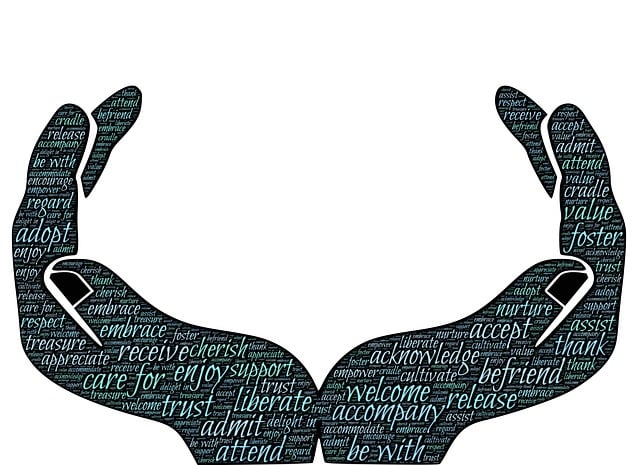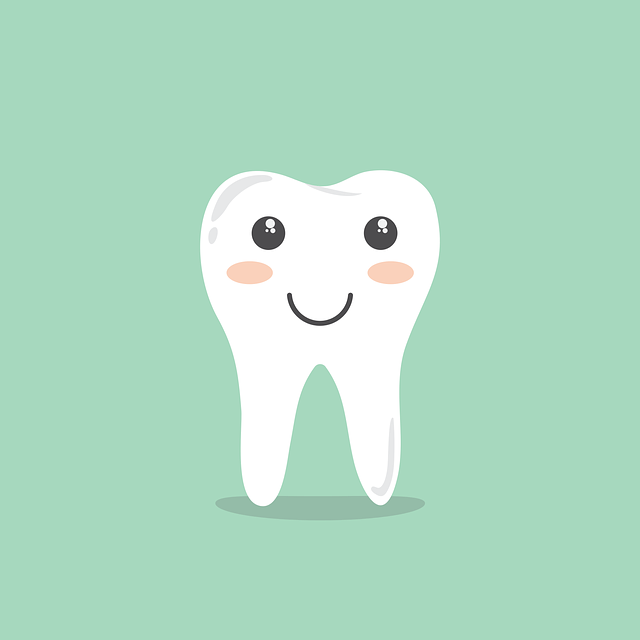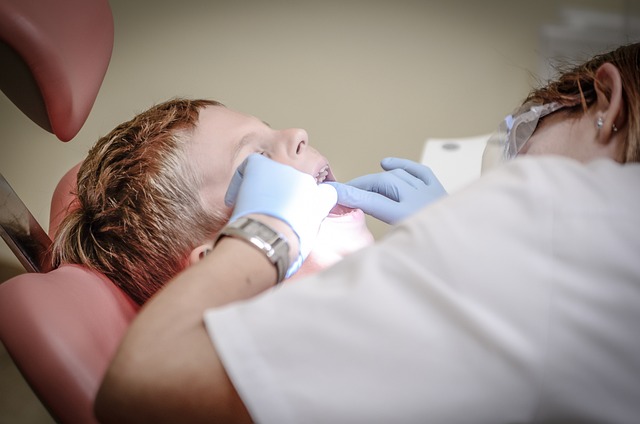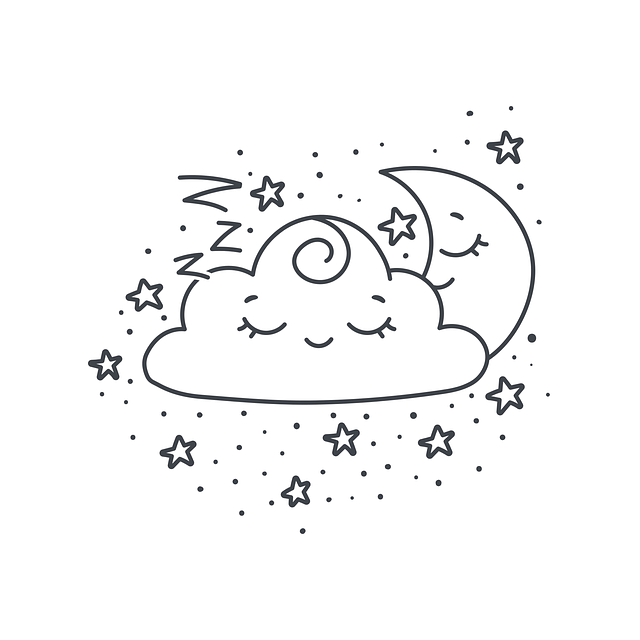When It’s Safe: Post-Tooth Extraction Infection Concerns
Welcome to our informative article on “When It’s Safe: Post-Tooth Extraction Infection Concerns”! We understand that tooth extraction can be a nerve-wracking experience, and it’s natural to have concerns about potential infections afterward. Rest assured, we are here to provide you with all the essential information to put your mind at ease. Friendly and easy to understand, this article will address common questions, share preventive tips, and provide guidance on recognizing and treating post-tooth extraction infections. So, grab a cup of tea and let us guide you through this important topic, ensuring you have the knowledge you need for a smooth recovery.
1. Understanding Post-Tooth Extraction Infection Concerns: What You Need to Know
Having a tooth extraction can be a daunting experience, but understanding the potential risks and how to prevent infection can help ease your concerns. Here are a few important things you should know:
- Keep it clean: Maintaining good oral hygiene is crucial after a tooth extraction. Gently rinse your mouth with warm saltwater several times a day to keep the extraction site clean and free from bacteria.
- Watch out for symptoms: Be vigilant for any signs of infection, such as increasing pain, swelling, pus, or a foul taste in your mouth. If you experience any of these symptoms, it’s important to contact your dentist immediately.
- Stick to soft foods: Avoid consuming hard and crunchy foods for a few days following the extraction. Opt for soft foods like yogurt, soup, mashed potatoes, and smoothies to avoid irritating the extraction site.
Remember, post-tooth extraction infections are relatively rare, and by following these preventive measures, you can significantly reduce your risk. However, if you have any concerns or questions, don’t hesitate to reach out to your dental professional for personalized advice and guidance.

2. The Importance of Dental Health: Proper Care After Tooth Extraction
After undergoing tooth extraction, it is crucial to take proper care of your dental health. By following the right steps for post-extraction care, you can promote healing and prevent potential complications. Here are some essential guidelines to ensure a smooth recovery:
1. Keep the area clean: Gently rinse your mouth with warm saltwater three to four times a day, starting 24 hours after the extraction. This helps reduce inflammation and keeps the extraction site clean.
2. Avoid vigorous rinsing or spitting: For the first 24 hours, avoid rinsing forcefully or spitting, as this can disrupt the blood clot essential for the healing process.
3. Avoid smoking and drinking through a straw: Both smoking and drinking through a straw can dislodge the blood clot and delay healing. Therefore, it’s best to refrain from these habits for at least 72 hours post-extraction.
4. Take pain medication as directed: If you experience pain or discomfort after tooth extraction, over-the-counter pain relievers such as ibuprofen can help. Be sure to follow the recommended dosage and consult your dentist if the pain persists.
By adhering to these care instructions, you can minimize the risk of infection, protect the extraction site, and promote a speedy recovery. Remember, if you have any concerns or experience severe pain, it’s always best to consult your dentist.

3. Recognizing Possible Infections: Warning Signs to Look Out for After Extraction
After a tooth extraction, it’s important to remain vigilant for any signs of infection. While most extractions heal without any complications, infections can still occur. Here are some warning signs to watch out for:
- Excessive pain: It’s normal to experience some discomfort after an extraction, but if the pain becomes severe and persists for more than a few days, it could indicate an infection.
- Swelling: Swelling around the extraction site is normal in the first few days, but if it continues to increase or spreads to other areas of your face, it may be a sign of infection.
- Fever and chills: If you develop a fever above 100.4°F (38°C) or experience sudden chills, it could signify an infection. Contact your dentist immediately if this occurs.
- Bad taste or odor: A foul taste or unpleasant smell in your mouth could indicate an infection. Pay close attention to any changes in your breath following the extraction.
If you notice any of these warning signs, it’s crucial to seek dental intervention as soon as possible. Your dentist can evaluate the situation and prescribe antibiotics if necessary. Remember, timely detection and treatment of infections can prevent further complications and promote a smoother recovery process.

4. Prevention is Key: Effective Ways to Reduce the Risk of Infection
In our quest to stay healthy, prevention plays a crucial role. By adopting simple and effective habits, we can significantly reduce the risk of infection. Here are some tried and tested measures that can help keep you and your loved ones safe:
- Wash your hands regularly: Proper hand hygiene is paramount. Wash your hands with soap and water for at least 20 seconds, especially after being in a public place or after coughing, sneezing, or blowing your nose. If soap and water are not readily available, use a hand sanitizer with at least 60% alcohol.
- Maintain social distancing: Keep a safe distance of at least six feet from others, especially if they are coughing, sneezing, or not wearing a mask. Avoid crowded places and gatherings, as they increase the likelihood of coming into contact with the virus.
- Wear a mask: It is important to wear a mask that covers both your mouth and nose when in public settings, especially when social distancing is challenging. Masks act as a physical barrier, preventing respiratory droplets from spreading to others.
Remember, prevention is not just about protecting yourself but also those around you. Incorporate these preventative measures into your daily routine to reduce the risk of infection and help create a safer environment for everyone.

5. Nurturing the Healing Process: How to Keep the Extraction Site Clean and Healthy
Nurturing the healing process after a tooth extraction is crucial for ensuring a clean and healthy extraction site. By taking proper care, you can minimize the risk of infection and promote faster healing. Follow these tips to help keep your extraction site clean and healthy:
- Follow your dentist’s instructions: Your dentist will provide specific post-extraction instructions tailored to your needs. Make sure to follow them diligently to ensure optimal healing. This may include recommendations for pain management, oral hygiene, and avoiding certain foods or activities.
- Maintain good oral hygiene: Keeping your mouth clean is essential during the healing process. Gently brush your teeth twice a day using a soft-bristled toothbrush. Be careful around the extraction site to avoid irritating it. Rinse your mouth with a saltwater solution (mix 1/2 teaspoon of salt in 8 ounces of warm water) after each meal to reduce inflammation and kill bacteria.
- Avoid tobacco and alcohol: Smoking and consuming alcohol after a tooth extraction can hinder the healing process and increase the risk of complications. It’s best to refrain from these habits until your dentist gives you the green light to resume them.
Additionally, it’s important to avoid touching the extraction site with your fingers or tongue to prevent the introduction of bacteria. To help reduce swelling, you can apply an ice pack to the affected area for short periods, making sure to wrap it in a cloth or towel to protect your skin. Remember, careful and consistent care of your extraction site will help ensure a clean and healthy healing process, maintaining the success of your dental treatment.

6. Don’t Let Fear Hold You Back: Debunking Myths About Post-Extraction Infections
When it comes to tooth extractions, one of the biggest concerns is the fear of developing an infection afterward. However, it’s important to debunk some common myths surrounding post-extraction infections to alleviate unnecessary worries.
1. Myth: All extractions result in infections. In reality, the risk of infection after a tooth extraction is relatively low. Following proper dental hygiene practices recommended by your dentist, such as gently rinsing with warm saltwater or using an antimicrobial mouthwash, can significantly reduce the chances of developing an infection. It’s also crucial to follow any post-operative instructions provided by your dentist, including taking prescribed antibiotics if necessary.
2. Myth: The pain after extraction indicates an infection. It’s natural to experience some discomfort and pain after a tooth extraction. However, this doesn’t necessarily mean you have an infection. Mild to moderate pain can be managed with over-the-counter pain medications or those prescribed by your dentist. If you notice persistent and worsening pain, redness, swelling, or pus discharge from the extraction site, it’s essential to contact your dentist as these could be signs of an infection that requires attention.
7. Seeking Professional Help: When to Consult Your Dentist Regarding Infection Concerns
If you suspect an infection in your mouth, it is important to consult your dentist to address the concern promptly. While some minor oral infections can be treated at home, others may require professional intervention to prevent further complications. Here are a few situations when you should definitely seek assistance from your dentist:
- Severe pain or swelling: If you are experiencing severe pain or swelling in your mouth, it could be an indication of an infection that needs immediate attention. Your dentist will be able to assess the situation, diagnose the problem, and provide appropriate treatment.
- Prolonged symptoms: If you have been experiencing symptoms of an infection, such as persistent bad breath, continuous tooth sensitivity, or an ongoing toothache, for more than a few days, reaching out to your dentist is advisable. They can determine the underlying cause and recommend suitable treatment.
Remember, untreated oral infections can lead to serious complications, such as the spread of the infection to other parts of the body. It is crucial to consult your dentist when infection concerns arise to ensure proper diagnosis, treatment, and prevention of any further dental issues.
8. Exploring Home Remedies: Natural Ways to Promote Healing and Reduce Infection Risk
In addition to traditional medical treatments, there are several natural remedies that can help promote healing and reduce the risk of infection. These home remedies are easy to incorporate into your routine and are often available right in your kitchen or backyard. So, let’s explore some of these natural ways to enhance healing and safeguard against infections.
1. Honey: Known for its antimicrobial properties, honey has been used for centuries to promote wound healing. Applying raw honey directly on cuts or burns can speed up the healing process while preventing infections. Make sure to cover the area with a clean bandage or dressing after applying the honey.
2. Garlic: Not only is garlic a tasty addition to many dishes, but it also possesses natural antibiotic properties. Consuming garlic regularly can help protect against infections and boost the immune system. You can either add it to your meals or take garlic supplements, but consult with a healthcare professional before starting any new supplements.
9. Antibiotics and Oral Hygiene: Understanding their Role in Preventing Infections
Antibiotics and oral hygiene play critical roles in preventing infections and maintaining overall oral health. Understanding their functions and how to use them effectively is essential for optimal dental care. Here, we will delve into the significance of antibiotics and oral hygiene practices and how they work together to ward off infections.
The Role of Antibiotics
Antibiotics are medications that are prescribed by healthcare professionals to combat bacterial infections. They work by either killing the harmful bacteria or inhibiting their growth, thus helping the body’s natural defense mechanisms fight off the infection. When it comes to oral infections such as gum disease or tooth abscess, antibiotics can be an effective treatment tool. However, it’s important to note that antibiotics are not a cure-all solution and should be used responsibly. Here are a few key points to remember:
- Prescription is a must: Antibiotics should only be taken if prescribed by a qualified healthcare professional. Do not self-medicate or rely on leftover antibiotics from a previous prescription.
- Complete the course: Take antibiotics as instructed and complete the entire prescribed course, even if symptoms improve. This helps ensure that all bacteria are eradicated and reduces the risk of antibiotic resistance.
Oral Hygiene Practices for Infection Prevention
An essential component of preventive oral care is maintaining good oral hygiene practices. Regular and proper oral hygiene helps eliminate bacteria and reduces the risk of infections. Here are some effective oral hygiene practices you should incorporate into your daily routine:
- Brushing twice a day: Use a soft-bristled toothbrush and a fluoride toothpaste to brush your teeth for two minutes, twice a day. Pay close attention to all tooth surfaces and along the gumline.
- Flossing daily: Flossing removes plaque and food particles from between the teeth and along the gumline, where a toothbrush can’t reach. Make sure to floss gently and use proper technique to avoid injuring your gums.
- Using mouthwash: Rinse your mouth with an antimicrobial mouthwash to reduce bacteria and freshen your breath. Consult your dentist for recommendations on the most suitable mouthwash for your needs.
By understanding the role of antibiotics and maintaining good oral hygiene practices, you can significantly reduce the risk of oral infections, promoting a healthy and vibrant smile.
10. Taking Charge of Your Recovery: Tips for a Smooth and Infection-Free Healing Process
During your recovery journey, it’s important to take an active role in ensuring a smooth healing process, free from any potential infections. Here are some valuable tips to help you get back on your feet:
- Follow your doctor’s instructions: Your healthcare professional is your best guide. Make sure to adhere to their advice regarding wound care, medication, and any specific precautions to prevent infection.
- Keep the wound clean: Regularly cleanse the wound with mild soap and water, or as advised. Ensure gentle patting dry and avoid rubbing or using harsh chemicals that may irritate the area. Remember to change dressings as per your doctor’s instructions.
- Promote good circulation: Movement and gentle exercise, in consultation with your healthcare provider, can help stimulate blood flow, aiding in the healing process. However, avoid strenuous activities that could strain the healing area.
- Maintain a healthy diet: Proper nutrition is crucial for healing. Include plenty of fruits, vegetables, lean proteins, and whole grains in your meals to provide your body with the essential nutrients it needs to recover efficiently.
Furthermore, it’s highly recommended to:
- Practice good hand hygiene: Regularly wash your hands with soap and water for at least 20 seconds, especially before touching the wound or changing dressing. If soap and water aren’t available, use an alcohol-based hand sanitizer.
- Avoid smoking and excessive alcohol consumption: These habits can compromise your immune system, making it harder for your body to fight off infections. Quitting smoking and minimizing alcohol intake will greatly support your healing process.
- Watch for signs of infection: Pay close attention to any unusual symptoms around the wound such as increased redness, swelling, warmth, pus, or a foul odor. If you notice any of these signs, promptly contact your healthcare provider for proper evaluation and treatment.
- Maintain regular follow-up appointments: Attend all scheduled check-ups with your doctor to monitor your progress and ensure any potential issues are addressed promptly.
By employing these tips and actively participating in your recovery, you can greatly contribute to a smooth healing process without the interference of infections. Remember, your well-being is our utmost priority!
Frequently Asked Questions
Q: What should I expect after a tooth extraction?
A: After a tooth extraction, it is normal to experience some swelling, discomfort, and mild bleeding. These symptoms can last for a few days, but they should gradually improve.
Q: How do I reduce swelling and discomfort?
A: To reduce swelling and discomfort, apply an ice pack to the affected area for about 15 minutes at a time. Taking over-the-counter pain medication as directed by your dentist or oral surgeon can also help manage any pain you may experience.
Q: Is it normal to have some bleeding after a tooth extraction?
A: Yes, it is common to have some bleeding after a tooth extraction. Bite down gently on a clean gauze pad or moist tea bag for around 30 minutes to help control the bleeding. If the bleeding persists or becomes excessive, contact your dentist.
Q: How can I prevent infection after a tooth extraction?
A: To prevent infection, it’s crucial to follow proper oral hygiene practices. Gently rinse your mouth with warm saltwater (one teaspoon of salt dissolved in a glass of water) after 24 hours. Avoid vigorous rinsing or spitting to avoid dislodging the blood clot, which can lead to a dry socket.
Q: What is a dry socket, and how can I avoid it?
A: A dry socket occurs when the blood clot that forms after a tooth extraction becomes dislodged or dissolves prematurely. This can be extremely painful. To avoid it, do not smoke or use tobacco products, avoid drinking through a straw, and follow your dentist’s instructions regarding eating restrictions.
Q: When is it safe to resume normal activities?
A: It is generally safe to resume normal activities the day after a tooth extraction. However, it’s important to avoid any strenuous activities or exercises for at least 24 hours to allow the blood clot to form properly.
Q: How will I know if I have an infection?
A: Symptoms of infection include severe pain, increased swelling, pus or discharge, a foul taste or odor, and a fever. If you experience any of these symptoms, contact your dentist immediately.
Q: What should I do if I think I have an infection?
A: If you suspect you have an infection, it’s essential to contact your dentist or oral surgeon right away. They will be able to evaluate your symptoms and prescribe appropriate treatment, such as antibiotics if necessary.
Q: Can I brush my teeth after a tooth extraction?
A: You should avoid brushing the extraction site for the first 24 hours after the procedure. After that, continue to brush your teeth gently, taking care to avoid the extraction area to prevent any irritation or injury.
Q: Is it safe to eat after a tooth extraction?
A: It is generally safe to eat after a tooth extraction. Stick to a soft or liquid diet for the first 24-48 hours, gradually reintroducing solid foods as you feel comfortable. Avoid hot, spicy, or crunchy foods that can irritate the extraction site.
Remember, if you have any concerns or questions, it is always best to consult your dentist or oral surgeon. They are the most qualified to provide personalized advice based on your specific situation.
Conclusion
That’s all you need to know about post-tooth extraction infection concerns. Remember, while infections can occur after tooth extraction, they are relatively rare and can usually be managed with the proper care and attention. By following your dentist’s instructions, maintaining good oral hygiene, and watching out for any signs of infection, you can ensure a smooth and safe recovery process. If you experience any unusual symptoms or have concerns, don’t hesitate to reach out to your dentist who will be more than happy to address them and provide the necessary treatment. So, keep calm, take care of yourself, and soon enough, you’ll be smiling with confidence and enjoying your healthy, pain-free mouth.





